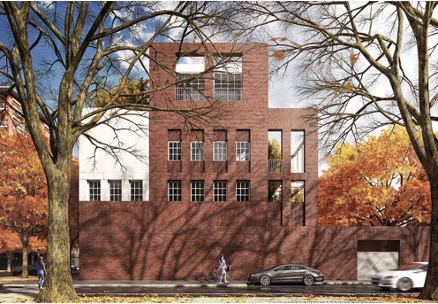Rendering Aurora. Analysis of an urban regeneration process in Turin between the real and the virtual
DOI:
https://doi.org/10.13133/2532-6562/17917Keywords:
Computer Generate Images, urban transformation, gentrificationAbstract
Computer generated images (CGIs) are nowadays the main tool for communicating architectural projects: digitally produced in a photorealistic style, they depict both the spaces to be built and the people who will inhabit them. Far from being simple atmospheric visualisations, CGIs are subliminal images that are often sold on the real estate market and flaunted by media and public actors to legitimise urban planning policies. This paper therefore aims to investigate the influence that renderings can have on urban regeneration processes, investigating the case-study of Aurora, a multiethnic and stigmatised neighbourhood in Turin. Here, real estate developers build and market a different, exclusive and exclusionary, image of the present social reality. The iconographic analysis of these renderings then leads us to reflect, in a climate of consensual urban planning, on the management of urban processes by the public sector.
References
Armano E., Dondona C., Ferlaino F., a cura di, (2016). Postfordismo e trasformazione urbana. Casi di recupero dei vuoti industriali e indicazioni per le politiche nel territorio torinese. Torino: Centro stampa Regione Piemonte.
Baudrillard J. (1982). The Evil Demon of Images. The Power Institute of Fine Arts.
Boltanski L., Esquerre A. (2017). Enrichissement: une critique de la marchandise. Paris: Gallimard.
Bukowski W. (2019). La buona educazione degli oppressi. Piccola storia del decoro. Roma: Alegre.
Christmann G., Singh A., Stollmann J. and Bernhardt C. (2020). «Visual Communication in Urban Design and Planning: The Impact of Mediatisation(s) on the Construction of Urban Futures». Urban Planning n. 5(2), pp. 1-9.
DOI: https://doi.org/10.17645/up.v5i2.3279.
Degen M., Melhuish C. and Rose G. (2017). «Producing Place Atmospheres Digitally: Architecture, Digital Visualisation Practices and the Experience Economy». Journal of Consumer Culture n. 17(1), pp. 3-24.
DOI: 10.1177/1469540515572238.
Ghertner D. A. (2015). Rule By Aesthetics: World-Class City Making in Delhi. Oxford University Press. New York.
DOI: 10.1093/acprof:oso/9780199385560.001.0001.
Hamnett C., Whitelegg D. (2007). «Loft conversion and gentrification in London: from industrial to postindustrial land use». Environment and Planning, (39):106-124. DOI: 10.1068/a38474.
Houdart S. (2008). «Copying, cutting and pasting social spheres: Computer designers’ participation in architectural projects». Science Studies, 21(1): 47-63. DOI: https://doi.org/10.23987/sts.55233.
Ley D. (2003). «Artists, Aestheticisation and the Field of Gentrification». Urban Studies n. 40(12), pp. 2527-2544. DOI: 10.1080/0042098032000136192.
Mirzoeff N. (2002). Introduzione alla cultura visuale. Roma: Meltemi.
Nastasi M. (2018). Città d’immagini. Fotografia e paesaggi in trasformazione: skyline, rendering, icone. Tesi di dottorato di ricerca in Storia delle Arti, Università Ca’Foscari, Venezia. Testo disponibile al sito: http://dspace.unive.it/handle/10579/12912.
Pisanello C. (2017). In nome del decoro. Dispositivi estetici e politiche securitarie. Verona: Ombre Corte.
Rose G., Degen M. and Melhuish C. (2014). «Networks, interfaces and computer-generated images: learning from digital visualizations of urban redevelopment projects». Environment and Planning D: Society & Space, 32(3): 386-403. DOI: https://doi.org/10.1068/d13113p.
Ross N. J. (2016). «Appropriating the Past: Urban Exploration and Loft Living in Deindustrialized Detroit». Spaces & Flows: An International Journal of Urban & Extra Urban Studies n. 7(4), pp. 35-48. DOI: https:// doi.org/10.18848/2154-8676/CGP/v07i04/35-48.
Semi G. (2015). Gentrification. Tutte le città come Disneyland?. Bologna: Il Mulino.
Vanolo A. (2015a). «The image of the creative city, eight years later: Turin, urban branding and the economic crisis taboo». Cities (46): 1-7.
DOI: https://doi.org/10.1016/j.cities.2015.04.004.
Watson V. (2020). «Digital visualisation as a new driver of urban change in Africa». Urban Planning n. 5(2), pp. 35-43.
DOI: https://doi. org/10.17645/up.v5i2.2989.
Zukin S. (1982). «Loft living as ‘historic compromise’ in the urban core: the New York experience». International Journal of Urban and Regional Research, 6: 256-267.
Zukin S. (2013). L’altra New York. Bologna: Il Mulino.
Sitografia
Brescia42: https://www.torchioedaghero.it
Camplus Regio Parco: https://www.campluscollege.it/ Cohousing Buscalioni: https://tra.to.it
Ex Vetreria Rocca: https://www.exvetreriarocca.it Opificio 4.8: https://etns.eu/opificio/
Union1828: https://www.loft1828.it/
Verona37: https://www.housefactory.it

Downloads
Published
How to Cite
Issue
Section
License
Copyright (c) 2022 Michela Voglino

This work is licensed under a Creative Commons Attribution 4.0 International License.
NOTA DI COPYRIGHT
Proposta di licenza Creative Commons
1. Proposta per riviste Open Access
Gli autori che pubblicano su questa rivista accettano le seguenti condizioni:
Gli autori mantengono i diritti sulla loro opera e cedono alla rivista il diritto di prima pubblicazione dell'opera, contemporaneamente licenziata sotto una Licenza Creative Commons - Attribuzione che permette ad altri di condividere l'opera indicando la paternità intellettuale e la prima pubblicazione su questa rivista.
Gli autori possono aderire ad altri accordi di licenza non esclusiva per la distribuzione della versione dell'opera pubblicata (es. depositarla in un archivio istituzionale o pubblicarla in una monografia), a patto di indicare che la prima pubblicazione è avvenuta su questa rivista.
Gli autori possono diffondere la loro opera online (es. in repository istituzionali o nel loro sito web) prima e durante il processo di submission, poiché può portare a scambi produttivi e aumentare le citazioni dell'opera pubblicata (Vedi The Effect of Open Access).

